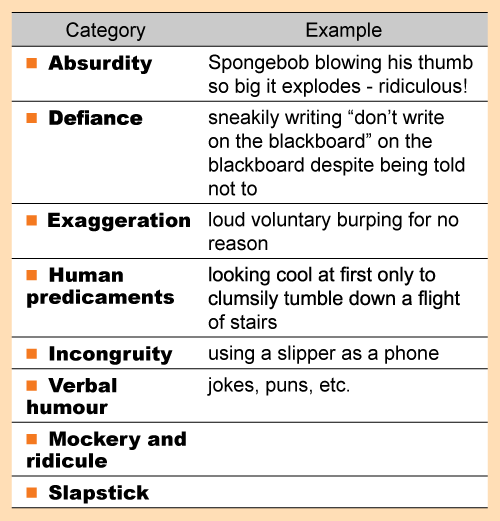A ‘sense of humour’, simply put, is the quality of an individual to find certain things funny. It may also involve the ability to tell a joke, appreciate it, or to use humour to mock or to tease. The development of a ‘sense of humour’ in children is an important part of their growth and development.
Humour is also considered a function of a child’s level of cognitive development, it is a very complicated psychological response; subjective, unique and involves various factors. It’s no joke! Science believes and has proven that having a sense of humour has its benefits:
- Higher intelligence.
- Promotes creative abilities.
- Improves and enhances social competence.
- High self-esteem.
- Strengthens interpersonal skills
- Better self-control skills, improve emotional and mental wellbeing.
- More resilient to bad/unfavourable experiences (seeing the funny side of things).
Humour & Family
Its important to have fun together as a family when trying to develop your child’s sense of humor. Share jokes, play games, watch funny movies, etc. and have a goofy time together.
Humour Development Stages in Children
In early infancy, baby’s first real laugh-out-loud usually comes around the age of 3-4 months. Pleasurable sensations, such as making fart noises on the child’s tummy, or surprising them at a game of peek-a-boo can elicit laughs over and over again. This is an early form of humour; however, a sense of humour develops and becomes more complex within these 4 stages:
Stage 1 [18 to 24 months]: children are amused when an object used for a familiar function is used in another entirely different and absurd way than it was meant to (i.e. wearing socks on ears).
Stage 2 [2 to 3 years]: Verbal jokes start to make sense (or nonsense). The simplest of jokes like calling mother as “daddy” represents a higher level of cognitive function – this requires a bit more abstract thought. The child no longer needs physical props to make or get jokes.
Stage 3 [3 to 5 years]: The child requires a bit more twist for a humorous effect because of the child’s increased knowledge of the world. At this stage children are often amused by an absurd visual, something out of place like adding fake wings on a dog or rabbit ears on a cat. It’s humorous not so much because it is illogical, but because it just looks funny.
Stage 4 [6 and onwards]: At this stage, the child’s sense of humour will resemble the humour of adults. It is characterised by the child’s ability to understand the double meanings that words and sentences can have sometimes (e.g. “What do you call a bear with no socks on? Bare-foot!”). Understanding of irony starts from 5-6 years-old while sarcasm can be grasped at about 8-9.
Nevertheless, it is still possible for a child at an older stage to appreciate and laugh at jokes meant for younger children. A sense of humour is not limited by range, but increases and expands to appreciate a broader field of types of humour. In fact, as adults, some of us still enjoy a good fart joke or slapstick every now and then.
What Makes Our Kids LOL?
Every child has a different preference on what they consider as ‘funny’. Enhanced cognitive abilities, better understanding of the world as well as past experiences help mould their sense of humour. Some of the categories of humour enjoyed by children (in some cases even adults) include:

Humour can be Developed, Taught and Learned
Parents have the most influence over their child’s personality. When a child’s development of humour is encouraged – as in praised and appreciated – it will blossom. Here are some ways you can develop your child’s sense of humour:
- Read funny books to them using funny, made-up language, voices and sounds – toddlers will enjoy this one. Older children may enjoy comics, cartoons or funny movies instead.
- Life experiences are also a significant factor. When failure, sadness or a bad experience comes up, use the opportunity to help them turn a negative situation into something positive.
- Jokes on you! Laughing at your antics can be as stimulating and encouraging as laughing with you. It shows that humour is accepted and it’s fine to be silly and laugh at yourself sometimes.
- A supportive environment at home fosters confidence which helps children be more willing to accept and make humorous attempts.
- Help your child see beyond the surface of things and encourage thinking outside the box.
- Enjoy and participate in the playful aspects of your child’s life. Role playing, for example (i.e. acting like a superhero or just pretending to be a police officer) is a good way to get you involved with your child. It’s about exploration and imagination, stimulating creativity, a crucial part of humour.
The most important thing when trying to encourage humour is not to steer your child’s sense of humour in a particular direction, let them build their own preferences to humour. Your duty is to provide guidance about humour that’s not hurtful and establishing limits so that your children don’t take it too far. If hurtful or inappropriate humour is used, don’t laugh. Take time to explain why that is not funny and help your child redirect his/her behaviour.
An educational collaboration with Malaysian Psychiatric Association.






Comments